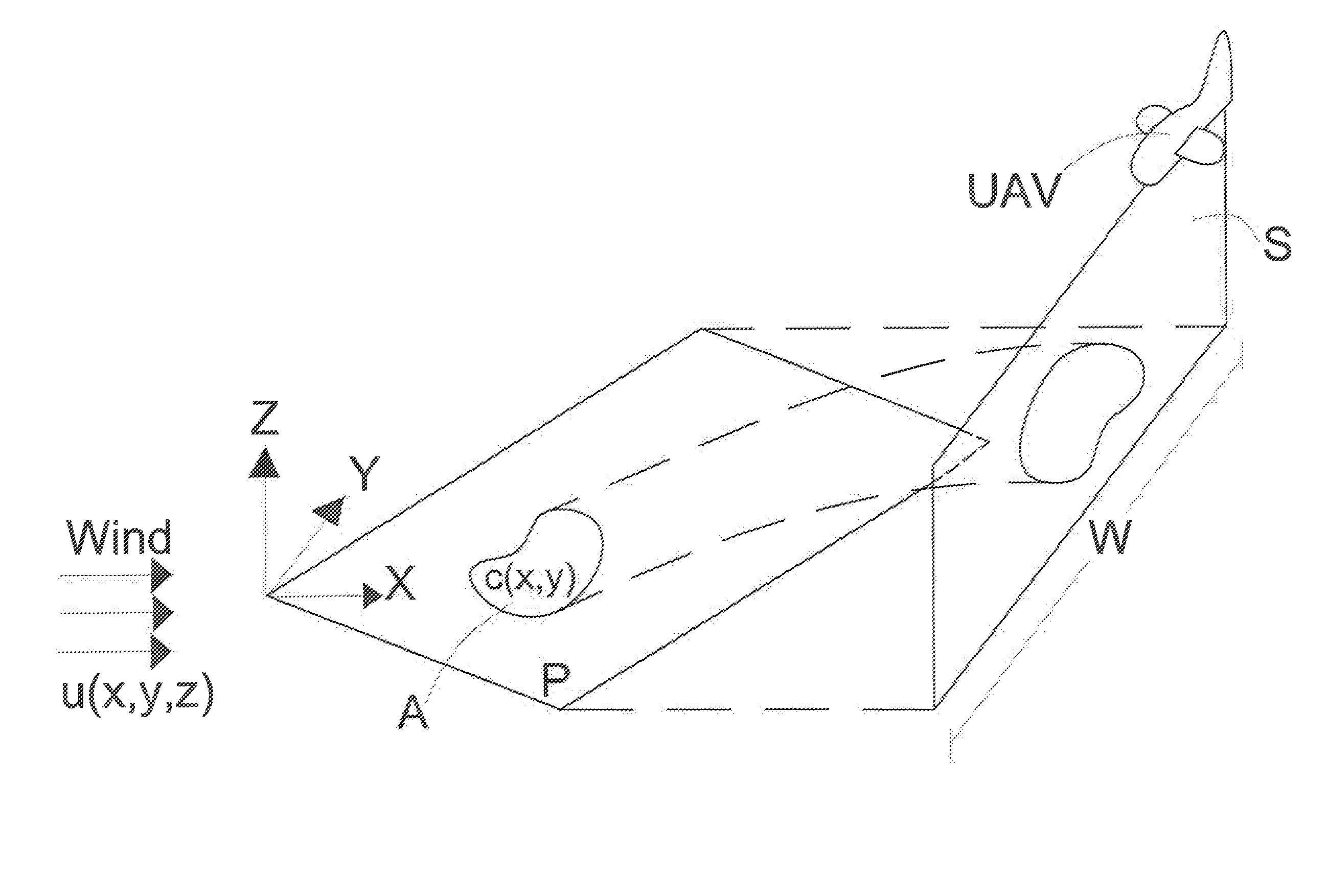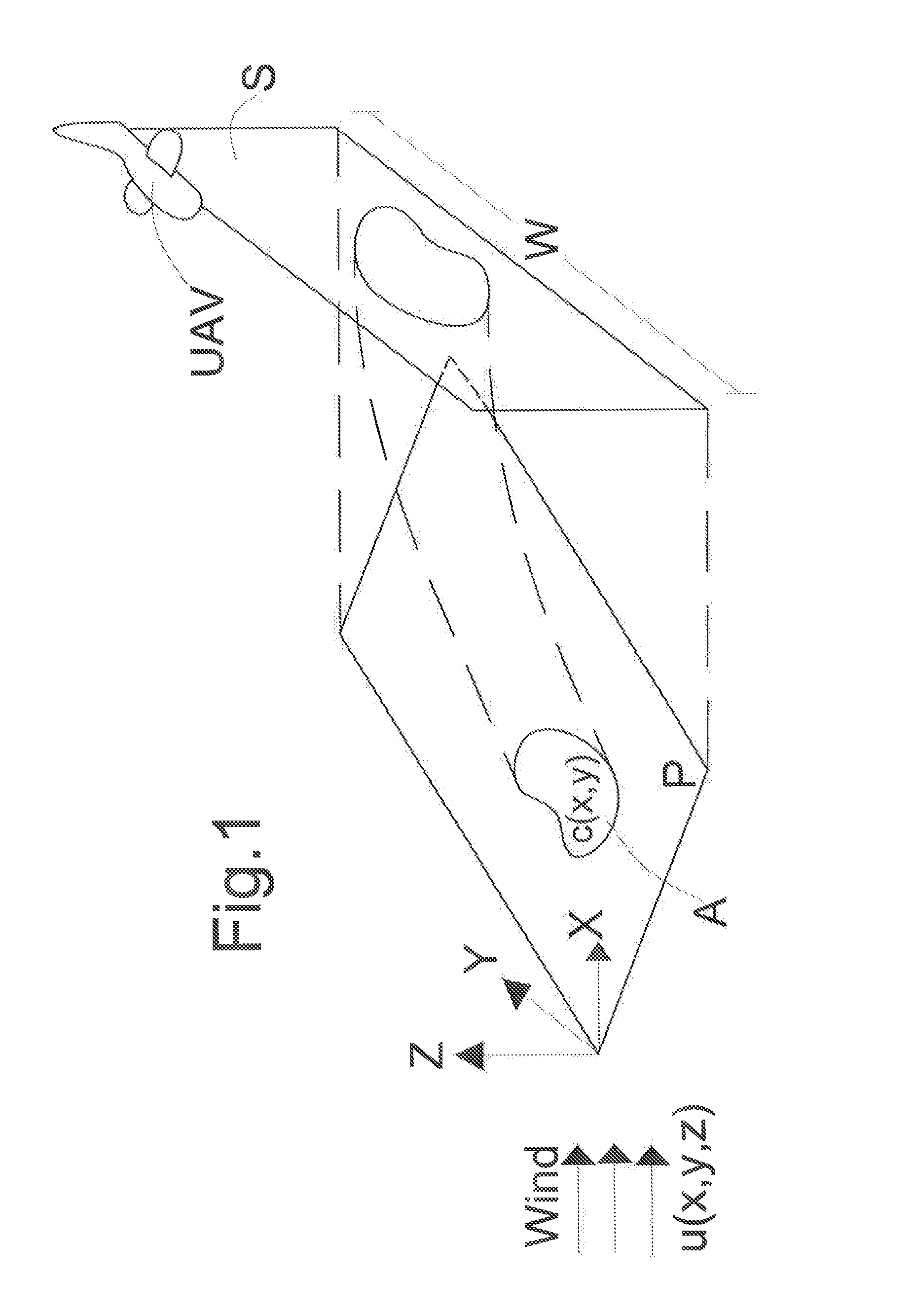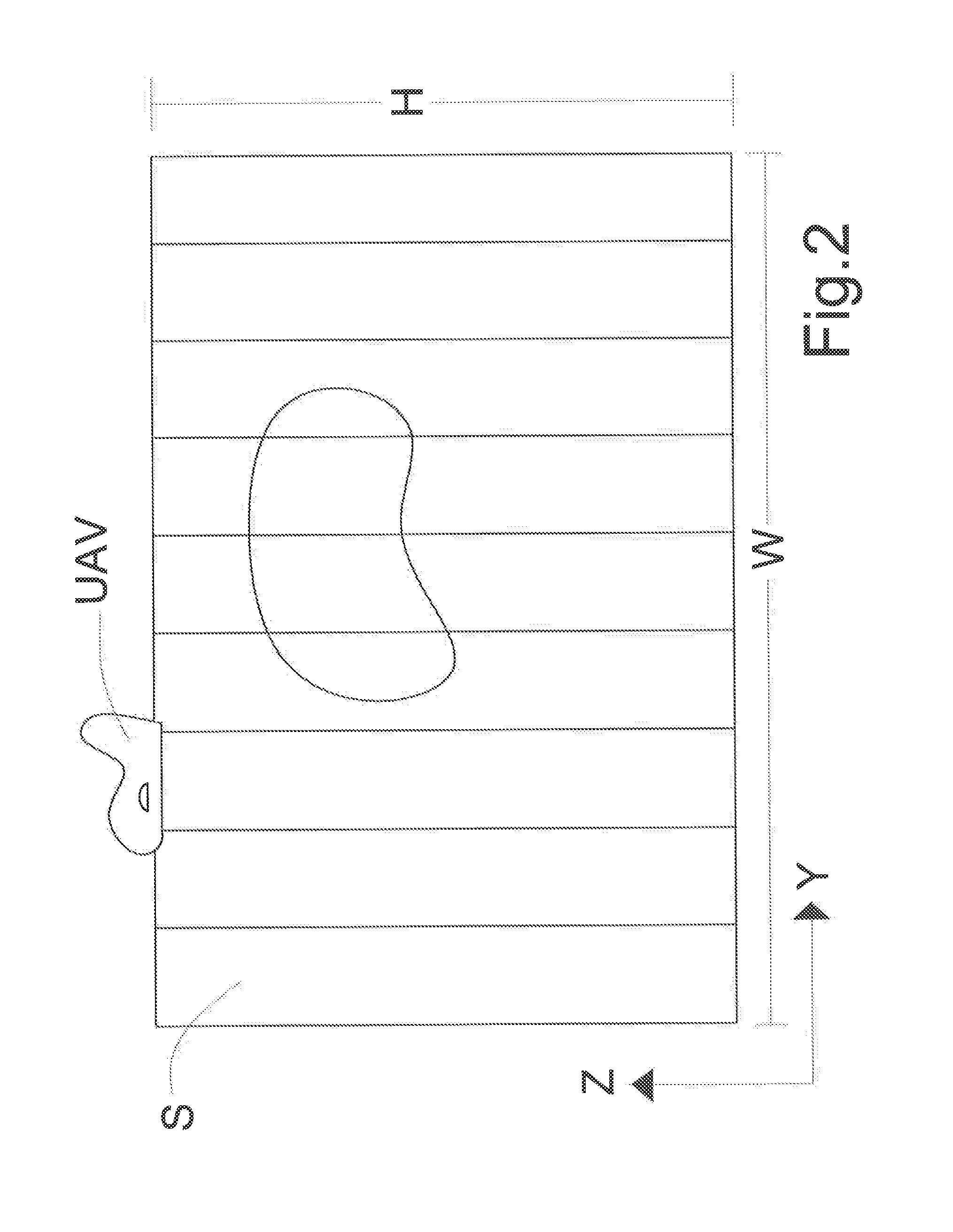Method for monitoring fugitive gas emissions from the soil, via vertical concentration measurements
- Summary
- Abstract
- Description
- Claims
- Application Information
AI Technical Summary
Benefits of technology
Problems solved by technology
Method used
Image
Examples
Embodiment Construction
[0027]With reference to FIG. 1, the site of a generic dispersed source, assimilated to a plane surface of coordinates (x,y) is indicated with P. Assuming the point flow q(x,y) constant during the measurement and indicated with A the area corresponding to the extent of the source of fugitive gas, said area being contained in the site to be monitored P, the total fugitive gas flow is described by the following equation:
Q=∫Aq(xo, y)dA (1)
[0028]The equation (1) in the case of uniform area source qo in the area A is simplified as follows:
Q=qnA (2)
[0029]The wind direction is that of the axis x and xo is the distance at which a vertical sampling plane S is pieced with respect to the point of the site P impacted—as the first—by the wind. The sampling plane S has a width W such as to contain the projection of the site to be monitored P. Once the generic wind field is indicated with u(x,y,z), the wind field present on S is indicated with u(xo,y,z). Using meteorological stations placed in ne...
PUM
 Login to View More
Login to View More Abstract
Description
Claims
Application Information
 Login to View More
Login to View More - R&D
- Intellectual Property
- Life Sciences
- Materials
- Tech Scout
- Unparalleled Data Quality
- Higher Quality Content
- 60% Fewer Hallucinations
Browse by: Latest US Patents, China's latest patents, Technical Efficacy Thesaurus, Application Domain, Technology Topic, Popular Technical Reports.
© 2025 PatSnap. All rights reserved.Legal|Privacy policy|Modern Slavery Act Transparency Statement|Sitemap|About US| Contact US: help@patsnap.com



